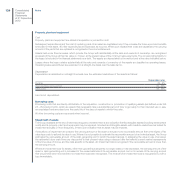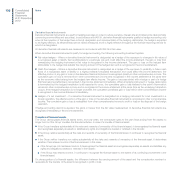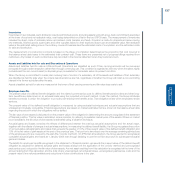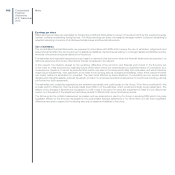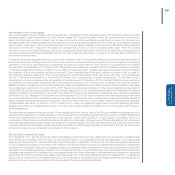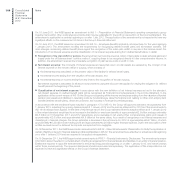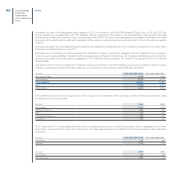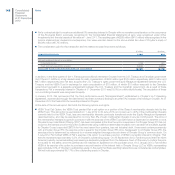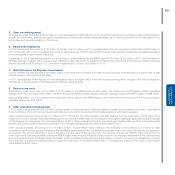Chrysler 2012 Annual Report Download - page 145
Download and view the complete annual report
Please find page 145 of the 2012 Chrysler annual report below. You can navigate through the pages in the report by either clicking on the pages listed below, or by using the keyword search tool below to find specific information within the annual report.
Notes
144 Consolidated
Financial
Statements
at 31 December
2012
On 16 June 2011, the IASB issued an amendment to IAS 1 – Presentation of Financial Statements requiring companies to group
together items within other comprehensive income that may be reclassified to the profit or loss section of the income statement. The
amendment is applicable for periods beginning on or after 1 July 2012. The application of this amendment is not expected to have any
significant effects on the measurement of items in the Group’s financial statement.
On 16 June 2011, the IASB issued an amendment to IAS 19 – Employee Benefits applicable retrospectively for the year beginning
1 January 2013. The amendment modifies the requirements for recognising defined benefit plans and termination benefits. The
main changes concerning defined benefit plans regard the recognition of the entire plan deficit or surplus in the balance sheet, the
introduction of net interest expense and the classification of net interest expense arising from defined benefit plans. In detail:
Recognition of the plan deficit or surplus: the amendment removes the previous option of being able to defer actuarial gains and
losses under the off balance sheet “corridor method”, requiring these to be recognised directly in other comprehensive income. In
addition, the amendment requires the immediate recognition of past service costs in profit or loss.
Net interest expense: The concepts of interest expense and expected return on plan assets are replaced by the concept of net
interest expense on the net plan deficit or surplus, which consists of:
the interest expense calculated on the present value of the liability for defined benefit plans,
the interest income arising from the valuation of the plan assets, and
the interest expense or income arising from any limits to the recognition of the plan surplus.
Net interest expense is calculated for all above components by using the discount rate applied for valuing the obligation for defined
benefit plans at the beginning of the period.
Classification of net interest expense: In accordance with the new definition of net interest expense set out in the standard,
net interest expense on defined benefit plans will be recognised as Financial income/(expenses) in the income statement. In the
application of the current version of IAS 19, the Group is recognising all the income and expense arising from the valuation of funded
pension plan assets and liabilities in operating costs by functional area, while the financial cost relating to Other post-employment
benefits (defined benefit plans), which are unfunded, are included in Financial income/(expenses).
In accordance with the transitional rules included in paragraph 173 of IAS 19, the Group will apply the standard retrospectively from
1 January 2013, adjusting the opening balance sheet at 1 January 2012 and the income statement for 2012 as if the amendments to
IAS 19 had always been applied. At the date of this Annual report, the Group estimated that the adoption effect as of 1 January 2012
of the revised standard would lead to an increase in the liability for employee benefits of approximately €2.6 billion and approximately
€4.8 billion at 31 December 2011 and 2012 respectively and a decrease in net equity (other comprehensive gains and losses) of
approximately €2.6 billion and approximately €4.8 billion at the same dates. As a result of recognising a net interest expense and
classifying it in financial charges, the Group estimates a decrease in the net income for 2012 of approximately €0.47 billion, of which
approximately €0.23 billion lower trading profit and approximately €0.24 billion higher financial expense. Due to the tax position of the
entities involved current or deferred tax impacts are expected to be negligible.
On 16 December 2011, the IASB issued certain amendments to IAS 32 – Financial Instruments: Presentation to clarify the application of
certain offsetting criteria for financial assets and financial liabilities in IAS 32. The amendments are effective for annual periods beginning
on or after 1 January 2014 and are required to be applied retrospectively.
On 16 December 2011, the IASB issued certain amendments to IFRS 7 – Financial Instruments: Disclosures. The amendments require
information about the effect or potential effect of netting arrangements for financial assets and liabilities on an entity’s financial position.
Entities are required to apply the amendments for annual reporting periods beginning on or after 1 January 2013, and interim periods
within those annual periods. The required disclosures should be provided retrospectively. The application of this interpretation is not
expected to have any significant effects on the Group’s financial statement.


